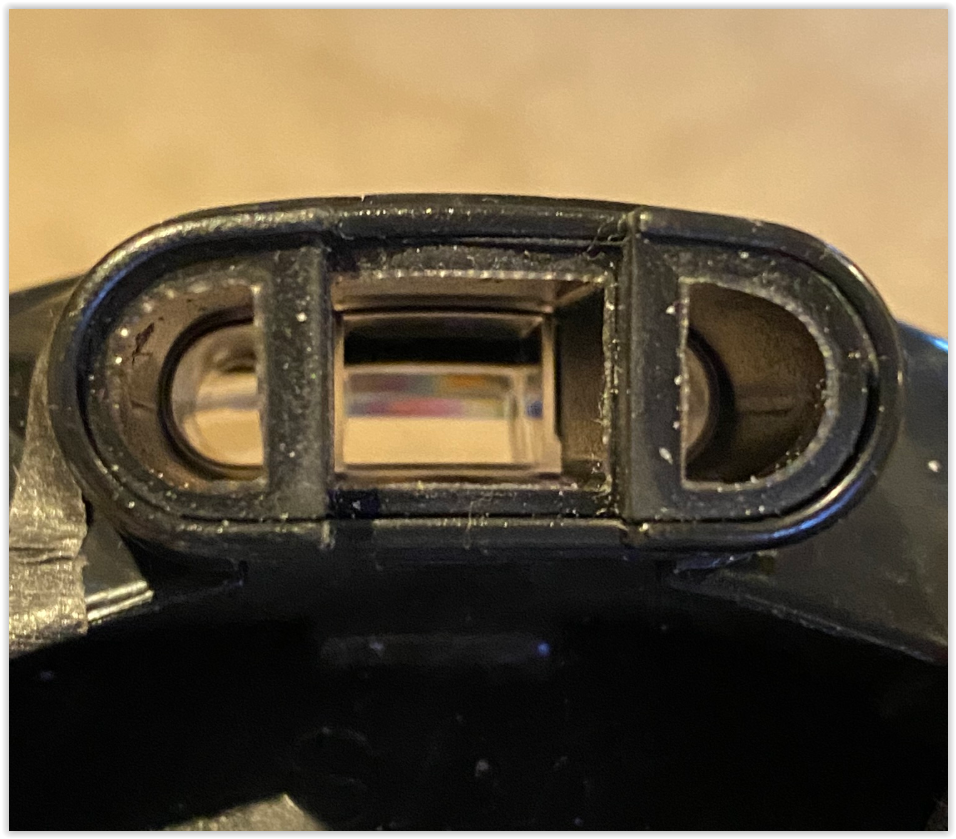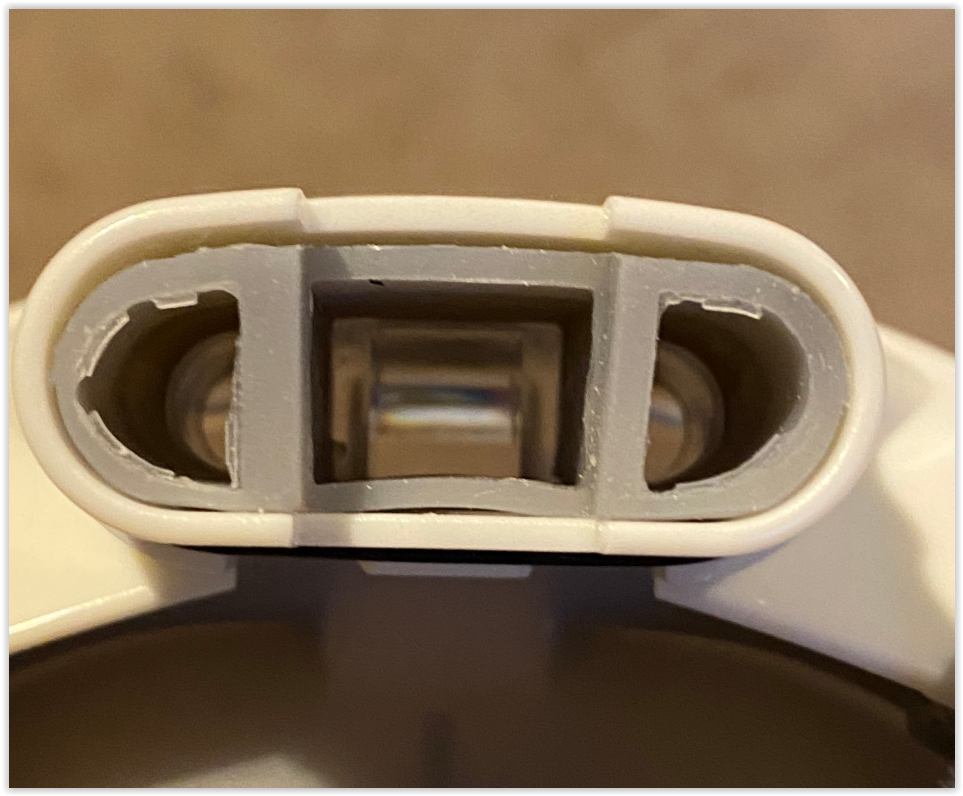DISCLAIMER: This device is not approved by the FDA. The files are provided AS IS due to the ongoing COVID-19 emergency. Please ensure it meets your needs before using the device. While it’s suitable for many needs, it has not gone through the traditional evaluation of a medical or protection device. Please read the section labeled “Potential Issues” before using the device.
Overview
The SnorkPPE was designed to provide an emergency PPE (Personal Protective Equipment) option during the COVID-19 crisis. The 3D part is designed for use with commonly available full-face snorkel masks. As of this writing (April 2020), these are still readily available.
Device Highlights
While using this device, it allows you to breathe through a standard 3-layer surgical mask with the following features:
- Uses 1/4th the surgical mask material or half the N95 material. With supplies running low, one brand new surgical mask becomes four.
- The air input faces away from the patient, so any viral material ejected from a patient (such as during a cough or intubation) is less likely to hit the mask material. This should increase lifespan of the mask further.
- There is virtually no fogging on the interior of the mask.
- Possibly eliminates the need for a traditional surgical mask and eye wear, making it faster to wear with more complete coverage of the face.
- The mask expels a good amount of moisture and carbon dioxide from a check valve near the mouth, which should lead to a longer lifespan of the filter material.
- The 3D print was especially designed for easy printing in roughly 1 hour and 20 minutes. It requires no brim, supports, or post work. Simply print, remove from the bed and put into use.
- The unique larger “mouth” allows more air to enter the snorkel, reducing the amount of strain while breathing.
- The snorkel mask is designed for salt water and chlorine, so it’s easy to wash with bleach. Other disinfectants should not damage the material.
- “Accessory Mounts” for adding things like extra support rubber bands or an optional “shield” in front of the face mask fabric.
- The SnorkPPE adapter can be removed for cleaning independently.
- The filter material can be removed and exchanged without having to remove the SnorkPPE from the snorkel mask.
- Most snorkel masks have three outputs where the snorkel attaches. Two side outputs are designed for carbon dioxide output, while the center is for air input. The SnorkPPE has internal walls to keep these three sections separate.
Installing and Use
- Prepare Snorkel Mask – Remove the snorkel from existing mask. It’s typically located in the top-center of the mask. There is a tab facing backwards you may need to lift gently to release it. Follow manufacturer instructions.
- Install SnorkPPE to Mask – Take the printed SnorkPPE and snap it into place. Make sure you place it in the correct direction, so the tab is facing backwards. It may take some pressure to get it to seat properly and engage the latch.
- Check the Fit for Leaks – At this point, you may wish to test the fit and ensure it’s airtight. Place the mask on your face and tighten the straps according to the manufacturer directions. Cover the opening of the SnorkPPE with the palm of your hand and inhale to test the seal. Like any good seal, you should not hear air leaking and the mask should pull firmly into your face from the negative pressure.
To view a video about the potential for leaks and the snorkel mask: https://vimeo.com/409360107/635983314c - Cut the Surgical Mask (if not using N95) – This is designed to be as simple and foolproof as possible, so it’s sized intentionally:
(1) Simply trim the stitched edges off a mask (i.e. you won’t need to ear loops or metal nose piece, just the center fabric). (2) Fold in half lengthwise and cut at the fold with scissors. (3) Fold that in half width-wise and cut. (4) You now have 4 filter pieces ready to go. - Install the Surgical Mask Adapter (if not using N95) – The STL file comes with three pieces. First, the main SnorkPPE, the second a lid that holds an N95 mask, and an optional adapter to allow use of a surgical mask instead of an N95.
- Install the Filter Medium – Place the cut rectangle of filter material over the opening of the SnorkPPE and rest the SnorkPPE Lid on top. Apply pressure along the edges until the lid snaps into place, noting that there are four “snaps” on each edge that should click into place. (See video above for more details.) An optional rubber band can be used as a backup to hold the lid in place.
Important: The SnorkPPE Lid has a “lip” on one side. This lip should be on the top, or facing upwards when installing. If you face the lip downward, you can damage the mask or the Lid. - Inspect the Install – The surgical mask should be taut. There should be no tears. Check the edges to ensure the mask has complete coverage and there were no holes formed during the install. You should see a curved “lip” of fabric bending around the edges. This is a great way to see that the fabric was placed properly around all the edges, with no air gap. Do one more check for air leaks by covering the filter and inhaling.
Potential Issues
When you’re in a crisis with makeshift PPE, there are always potential issues. Without extensive testing, we can’t know all the answers. There will always be risks involved. Some of the issues identified with this solution may include:
Carbon Dioxide – Any full face snorkel mask has the potential for the buildup of carbon dioxide. I have used this for extended periods with no ill effect. Side effects of excessive carbon dioxide may include nausea, headache, or rapid breathing and heart rate. When using the SnorkPPE for an extended period of time, try to get to a safe area with fresh air and, using the proper precautions, occasionally air out the mask. Again, always use common sense.
The actual amount of potential for carbon dioxide buildup is based upon variables outside my control. For example, snorkel mask manufacturers, the type of surgical mask being used, and your own physiology or exertion levels. Never sleep in the SnorkPPE or any snorkel mask.
Accidental Filter Removal – In certain environments, there is the potential for the surgical mask to get knocked off. This is a concern with any mask, but since you can’t see and feel it, it’s important to be careful and pay attention to the effort of your breathing. Be prepared with a backup PPE.
Accidental Filter Damage – If the 3D print has sharp edges or points, it may cut or tear the surgical mask. Simply shave the sharp edges gently with a razor or soften with fine sandpaper.
Restricted Air Flow – You’re breathing through a mask with, optimally, no leakage. That makes it more difficult to breathe. An air pump would help in several ways, including adding positive pressure, but they’re bulky and expensive and require power.
One-Way Exhale Valve on Mask – The front of the snorkel mask has a silicone valve that allows some of your breath to exit, but no water to enter. We need to remember that this was designed for water penetration, not a spray of virus. One risk is that, immediately following a heavy exhale, a forceful virus spray can enter the mask before the one-way valve has time to close. Or, perhaps, the valve may not be filtering down to under 1 micron? When I check the seal, I don’t feel or hear any air entering, but it would need further testing.
Glasses – Unfortunately, you can’t wear traditional eyeglasses with a full face mask. The seal won’t allow it.
Mask Fit – Not every mask is suitable for every face shape. Not every snorkel mask will have the quality control of a typical PPE. Please test the seals to the best of your abilities. Make sure it is pressed tightly against your face. If you feel there isn’t a good seal, do not use it.
Audibility – When you’re wearing a full face mask, you can speak, but you have to speak loudly. Your voice is muffled. This could prove to be difficult when coordinating with your team or communicating with a patient.
Filter Thickness Issues – N95 filters and surgical masks have slightly different thicknesses and sizes. An adapter is available to convert the native N95 lid to accept surgical mask material. If you want to try another type of filter medium with a different thickness, feel free to make your own to fit perfectly and share with the community:
https://www.tinkercad.com/things/5W6NCtWhwLj
It’s crucial that anyone using this solution understands and weighs the risks verses the rewards.
Mask Compatability
The SnorkPPE has been tested to fit on several masks. A list of masks that are compatible will be maintained here:
https://docs.google.com/spreadsheets/d/1U3avEpnTRiigxZJwXYD6sga-wKKRfYolPwEvX25XlDU/edit?usp=sharing
Feel free to add masks that you’ve tested.
Compatible masks will generally have a snorkel attachment like the ones in the images below.

